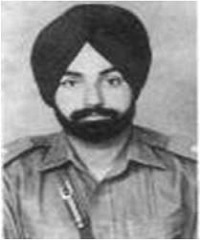
Service No : IC-4466
Date of Birth : September 19, 1928
Place of birth : Ludhiana Dist(Pun)
Service : Army
Last Rank : Major
Unit : 4 Horse (Hodson's Horse)
Arm/Regt : The Armoured Corps
Operation : Op Riddle
Awards : Maha Vir Chakra
Martyrdom : October 3, 1965
Major Bhupinder Singh MVC
Major Bhupinder Singh hailed from Harnampura village in Ludhiana district of Punjab and was born on 19 September 1928. He was the son of Shri Sajjan Singh, who instilled in him the values of hard work, discipline, and integrity from an early age. After completing his education, Maj Bhupinder Singh was driven by a sense of duty and pride to serve the nation, which led him to join the Indian Army. On 11 December 1949, at just 21 years of age, he was commissioned into the prestigious Hodson’s Horse (4th Horse), one of the most decorated and oldest armoured regiments of the Indian Army. Over the years, through his dedication, professionalism, and courage, he steadily grew in stature within the regiment. By 1965, after more than 15 years of service, he had risen to the rank of Major.Major Bhupinder Singh was known among his peers and subordinates as a determined and dependable officer. His leadership style was defined by his unwavering belief in leading from the front and sharing every risk and hardship with his men. This earned him deep respect within his unit.
When the Indo-Pak War of 1965 broke out, Major Bhupinder Singh’s unit, Hodson’s Horse, was deployed in the Punjab sector—a critical theatre of operations during the conflict. The region witnessed some of the fiercest tank battles and infantry-armour engagements of the war. In these high-stakes operations, Major Bhupinder Singh played a vital role, displaying the grit, tactical acumen, and courage that had come to define his military career
Battle of Phillora (Indo Pak War): 19 Sep 1965
When the Indo-Pak War of 1965 broke out, the Sialkot sector became the scene of some of the fiercest tank battles in history. The Battle of Phillora, fought from 10 September onwards, was one of the largest tank battles of the war and the first major engagement between the two nations in the sector. India’s 1st Armoured Division, equipped with four armoured regiments including Hodson’s Horse, was tasked with a massive offensive against Pakistan’s 6th Armoured Division. Pakistani forces resisted strongly and even launched repeated air attacks, but these inflicted little damage on the Indian tank columns. For three days, intense fighting raged, during which the Pakistani forces, facing mounting losses, were compelled to withdraw towards Chawinda. By this stage, the Indian troops had destroyed 67 enemy tanks. In this battle, Major Bhupinder Singh was commanding ‘B’ Squadron of 4 Horse, which was assigned to cut the enemy’s line along the Gadgor–Phillora road and to provide a fire base for the assault on Phillora. Leading from the front, he displayed remarkable tactical skill and inspiring courage. Under his command, the squadron inflicted heavy destruction on Pakistani tanks and equipment, playing a decisive role in tilting the battle in India’s favour.
Major Bhupinder Singh’s leadership shone once again during the subsequent Battle of Sodreke on 19 September. With bold manoeuvres and effective deployment of his squadron, he helped change the course of the battle. His tank came under enemy fire several times, but he refused to relinquish command, continuing to inspire his men through acts of personal gallantry. In one incident, when his own tank was damaged, he bailed out safely but immediately went back to rescue a comrade, exemplifying camaraderie and selflessness. Tragically, on 19 September—his 37th birthday—while leading another daring attack, his tank was struck by an enemy Cobra missile. By that time, he had already destroyed four enemy tanks. The missile strike caused a devastating fire that engulfed the tank. The driver was killed instantly, while Major Bhupinder Singh and his gunner, Sowar Vir Singh, sustained grievous burns and injuries. Both were evacuated to medical facilities and later shifted to the Military Hospital in Delhi. Although Sowar Vir Singh eventually recovered, Major Bhupinder Singh succumbed to his injuries on 3 October 1965.
For his exceptional bravery, inspiring leadership, and supreme sacrifice in the highest traditions of the Indian Army, Major Bhupinder Singh was awarded the nation’s second-highest wartime gallantry award, the Maha Vir Chakra, posthumously. His courage and selfless service remain a shining chapter in the history of the Indian Armoured Corps and a lasting inspiration for generations of soldiers.
24 Comments
« Previous 1 2 3 Next »

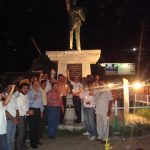
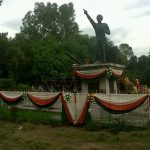
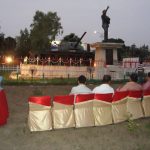
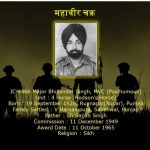
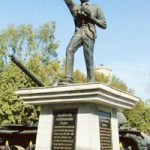
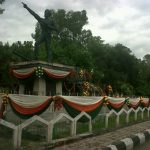
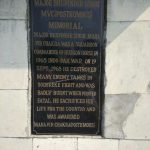
RAVINDER SINGH GILL
2022 at 10:29 pmHis father was EX.En and supervised the construction of Bhakra Dam.
He was the real cousin of my real cousin’s wife.
I feel proud to be his relative.
Dr. Kanwalpreet kaur
2023 at 12:58 pmAm compiling a book. Can you send me more information. 9356301497
Ravinder Singh Gill n/a
2022 at 10:29 pmOne more thing I didn’t mention earlier that his father was XEN of Bhakra Nangal dam during it’s built up.
He was the first XEN to be dismissed in country and in those old days it was of about 7 lac rupees scandal.
Major Bhupinder Singh disowned his father.
When his father wept in hospital and said, “if you bailed out safely, then why did you went in again”.
Major replied, “I had to wash some of my father’s sins. Because of you 65 labourers died. I could save only one life.”
Suvandas
2022 at 10:29 pmSir … entire world will remember your courage Greatest service for Nation
Valsan Kunnath
2022 at 10:29 pmBig Salute to the Brave Son of Bharath Major Bhupinder Singh, Maha Vir Chakra
“Duty beyond Death” “Soldiers go beyond call of Duty”
You will always be Saluted for your Patriotism, Utmost Courage, Supreme Sacrifice to the Motherland.
Undefeated Soldier of Courage, Taking Pride in the UNIFORM
INDIAN FLAG WILL ALWAYS FLY HIGH….
JAI HIND… VANDE MATHARAM
Arindam Bose
2022 at 10:29 pmHats off to Major Bhupinder Singh!!!
Mali Rituja Sunil
2022 at 10:29 pmMany soldiers worked hard to win india & give him freedom. I salute to all the leaders who gave freedom to us & also to the indian citizen. Thank you
Mali Rituja Sunil
2022 at 10:30 pmI don’t know the war was effective, but many soldiers worked hard to win india & give him freedom. I salute to all the leaders who gave freedom to us & also to the indian citizen. Thank you
Philomina sam
2022 at 10:30 pmYour story of courage and sacrifice is truly remarkable sir, I salute you. Jai Hind
Simranjeet Singh
2022 at 4:20 pmBut nobody knows that Major Bhupinder Singh’s real house is in Harnampura Village district Ludhiana where his land is also available, his father did job in Ropar District, but his mother lived in Harnampura village as my mother said she saw so many times when his mother went to near Bharat nagar Chowk to saw his Son’s statue and the pakistani tank which was took away by Bhupinder singh from Pakistan army in the indo pak war and also the stadium is available in Village at the name of Major Bhupinder Singh.
RAVINDER SINGH GILL
2022 at 12:09 pmActually the whole family disowned Sajjan Singh. He used to live alone in a big bungalow in Rakkh Bagh, Ludhiana.
Only his Bihari servant and his family looked after him and later Sajjan Singh made a will of the Rakkh Bagh’s Bungalow in favour of the Bihari servant.
LT Col H S Jallawalia
2023 at 1:01 pmDear Mr Ravinder Singh Gill , I feel sorry that you chose this August forum to wash your dirty linen. S Sajjan Singh was a thorough gentleman, whatever might have happened with him during his life. I say this as I am also from the same family and stay in village Harnampura. My Father ( Late Maj Gurdial Singh ) was very close to S Sajjan Singh and I often visited him at his residence near Rakh Bagh Ludhiana. In fact it is only due to him that the statue of his son was installed at Bharat Nagar.